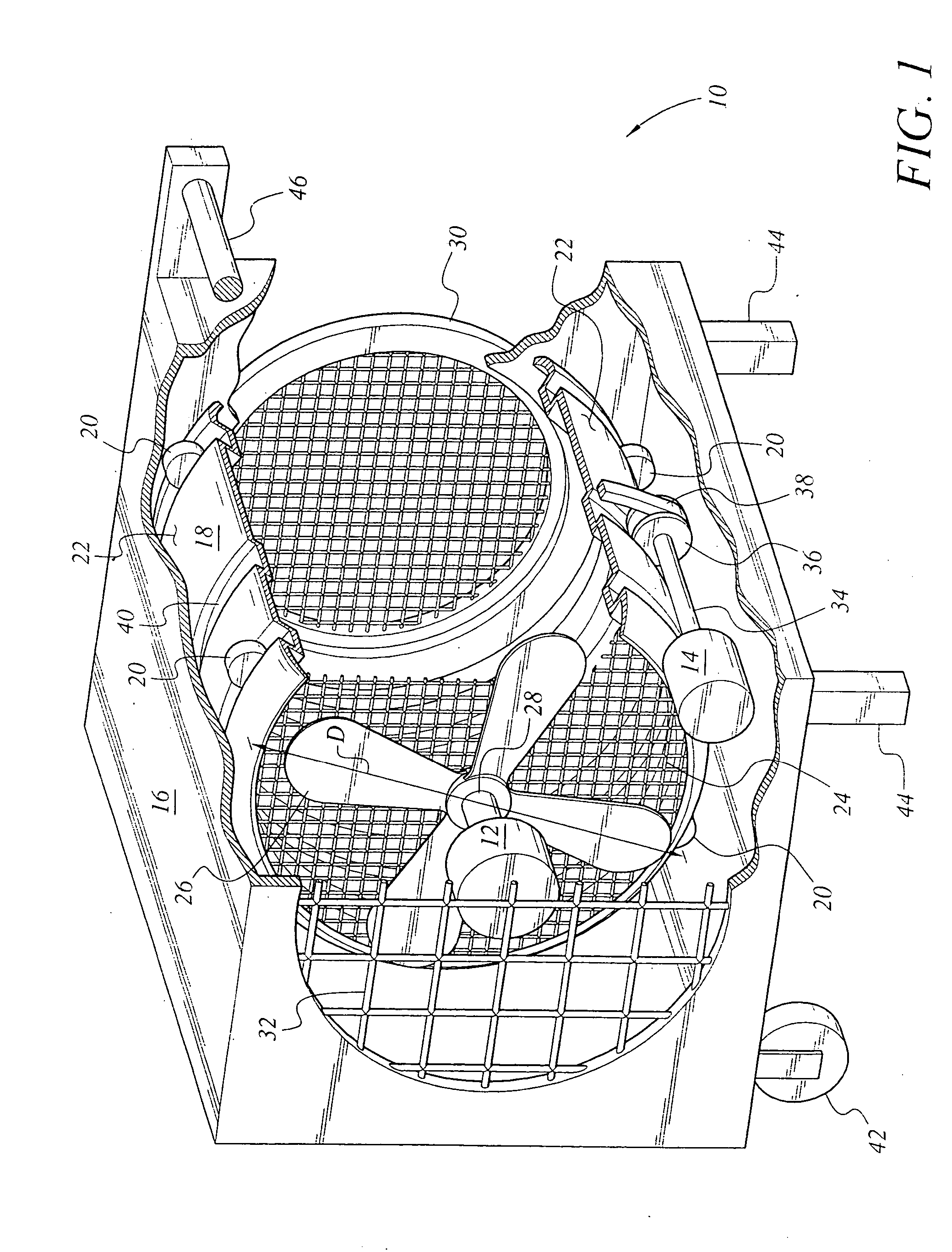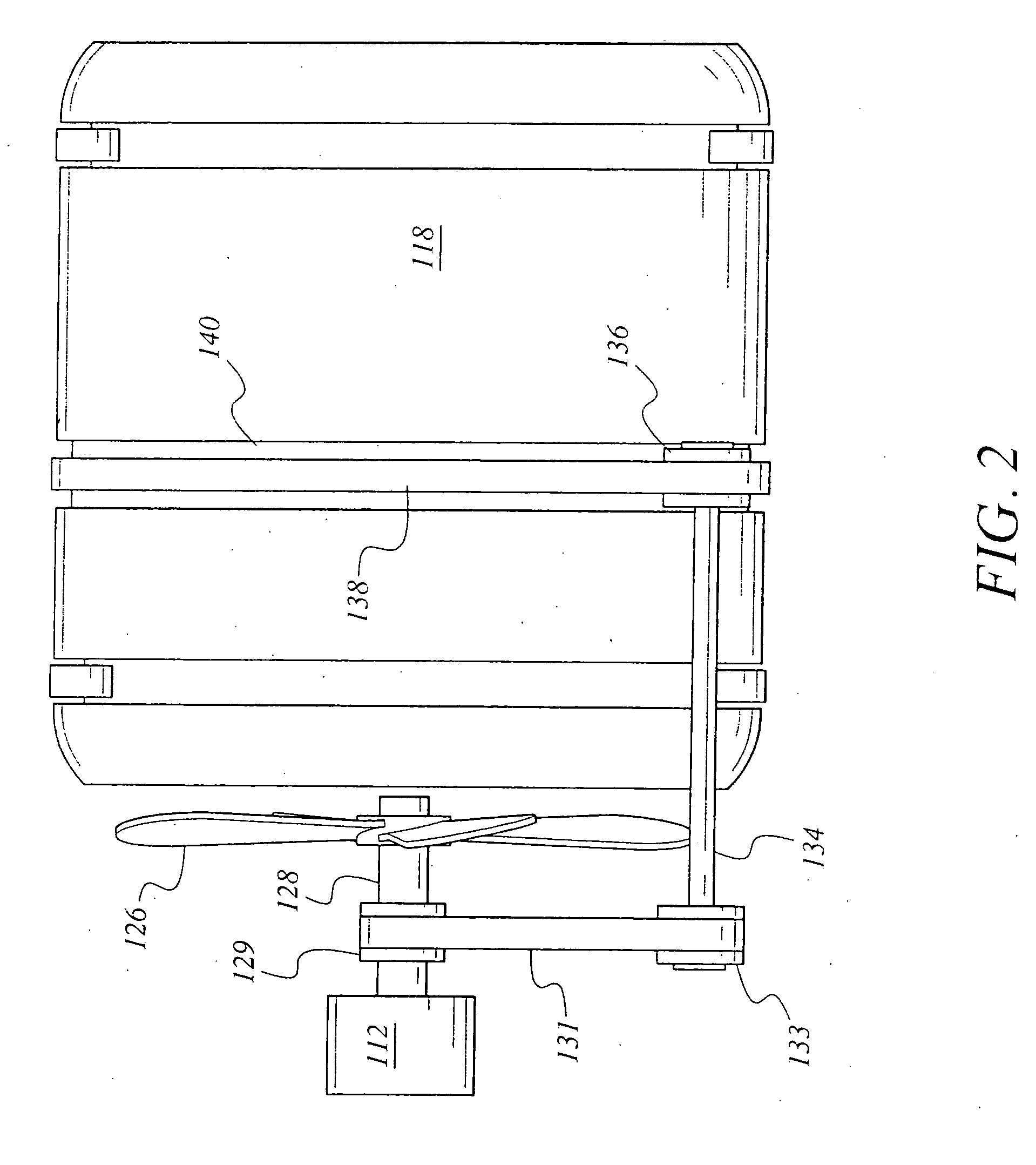Ambient air clothes dryer
a clothes dryer and ambient air technology, applied in the direction of drying machines, drying chambers/containers, light and heating apparatus, etc., can solve the problems of increasing the cost of operation of such conventional dryers, undesirable heat generation, and not particularly undesirable residual heat output into the structure, so as to save weight, complexity, and energy
- Summary
- Abstract
- Description
- Claims
- Application Information
AI Technical Summary
Benefits of technology
Problems solved by technology
Method used
Image
Examples
first embodiment
[0018]FIG. 1 of the drawings illustrates the present dryer 10, in which a separate fan motor 12 and drum rotation motor 14 are employed. The dryer 10 includes a housing or shell 16 having a hollow dryer drum 18 therein. The drum 18 rotates within the housing 16, and is supported by drum support wheels 20 or other mechanism installed internally within the housing 16. The dryer drum 18 has an impervious, generally cylindrical wall 22 having a diameter D. A screened airflow inlet end 24 is positioned adjacent the fan motor 12 with its fan 26 and fan drive shaft 28, with a screened airflow outlet end door 30 located opposite the inlet end 24 of the drum 18. The two screened ends 24 and 30 are preferably of a sufficiently fine mesh or gauge as to preclude the passage of small articles (e.g., loose change, buttons, etc.) therethrough, and have diameters closely approaching the diameter D of the dryer drum 18. The screen of the outlet door 30 may have a mesh or gauge sufficiently fine to s...
embodiment 10
[0022]FIG. 2 provides a side elevation view of an alternative drum drive system, in which the fan drive is also used to rotate the drum. In FIG. 2, the fan motor 112 drives an output shaft 128 to which the fan 126 is connected, as in the corresponding components 12, 28, and 26 of the embodiment 10 of FIG. 1. However, the fan motor output shaft 128 may include a drive belt pulley 129 thereon, with a jackshaft drive belt 131 extending from the fan motor shaft pulley 129 to a driven pulley 133 on a radially offset jackshaft or drum drive shaft 134. The shaft 134 includes a drum drive belt pulley 136 at its distal end, with a drum drive belt 138 extending around the pulley 136 and riding in a circumferential groove 140 around the dryer drum 118. It will be seen that the dryer drum 118 and drum drive belt 138 may be identical to the corresponding components 18 and 38 illustrated in FIG. 1 and described further above. The distinction between the configuration of FIG. 1 and that of FIG. 2 ...
PUM
 Login to View More
Login to View More Abstract
Description
Claims
Application Information
 Login to View More
Login to View More - R&D
- Intellectual Property
- Life Sciences
- Materials
- Tech Scout
- Unparalleled Data Quality
- Higher Quality Content
- 60% Fewer Hallucinations
Browse by: Latest US Patents, China's latest patents, Technical Efficacy Thesaurus, Application Domain, Technology Topic, Popular Technical Reports.
© 2025 PatSnap. All rights reserved.Legal|Privacy policy|Modern Slavery Act Transparency Statement|Sitemap|About US| Contact US: help@patsnap.com



